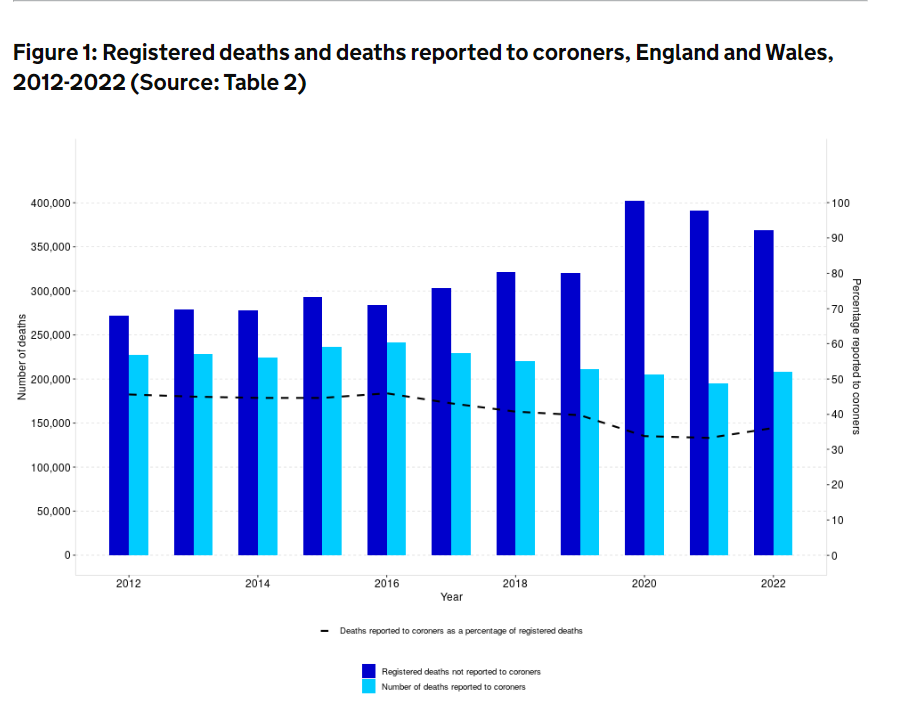Maternal deaths from cardiac causes have been reclassified as covid deaths.
It was evident from 2020 and this year's data confirms this.
🧵
It was evident from 2020 and this year's data confirms this.
🧵

Here's the reclassification from the previous report up to 2018-2020.
This table has been omitted from the current report but can mostly be deduced based on the graph of rates.
npeu.ox.ac.uk/assets/downloa…
This table has been omitted from the current report but can mostly be deduced based on the graph of rates.
npeu.ox.ac.uk/assets/downloa…

Here's a graph where cardiac and covid deaths are included in the same death rate (per 100,000 maternities).
The rate dropped markedly in 2018-2020 and was slightly higher from 2019-2021 but was comparable to 2014-2016.
The rate dropped markedly in 2018-2020 and was slightly higher from 2019-2021 but was comparable to 2014-2016.

In the meantime there was a massive rise in suicides of pregnant women which appears to be a 2020 phenomenon and a rise in thrombosis deaths.
There was also a rise in deaths from (pre)eclampsia and pregnancy related sepsis.
There was also a rise in deaths from (pre)eclampsia and pregnancy related sepsis.

Looking at the period 2018-2021 and comparing to 2014-2017 we see the following excess maternal deaths. Cardiac and covid were grouped for this analysis.
These look more like policy induced deaths than covid deaths to me.
Access to healthcare saves lives.
These look more like policy induced deaths than covid deaths to me.
Access to healthcare saves lives.

If I was as pro-vax as possible then you could claim that the 2019-2021 saw 6 more deaths from cardiac and covid combined than the 2014-2017 average.
If we assume
a) they were all due to covid
b) they were all in the unvaccinated
c) that someone had invented a miraculous Vx that could have prevented all of those deaths
a) they were all due to covid
b) they were all in the unvaccinated
c) that someone had invented a miraculous Vx that could have prevented all of those deaths
then vaccinating 2,066,997 mums in that period would have given an absolute risk reduction for the miracle of 0.0000029%
or 1 life saved per 340,000
or 1 life saved per 340,000
N.B. There is no data by year which makes interpretation slightly challenging.
There is also no indication of how many women had more than one cause of death included in the data.
npeu.ox.ac.uk/mbrrace-uk/dat…
There is also no indication of how many women had more than one cause of death included in the data.
npeu.ox.ac.uk/mbrrace-uk/dat…
Someone has pointed out that the figures for cardiac deaths look like a repetition of the row above.
I do not know if there was an error in this report. @NPEU_UKOSS will know.
I have recalculated based on subtracting other causes from total.
I do not know if there was an error in this report. @NPEU_UKOSS will know.
I have recalculated based on subtracting other causes from total.
Still big misclassification of cardiac death in 2018-2020.
With this corrected data, including all cardiac and covid deaths together, there was an excess of 31 deaths = 0.000015% of maternities.
With this corrected data, including all cardiac and covid deaths together, there was an excess of 31 deaths = 0.000015% of maternities.

• • •
Missing some Tweet in this thread? You can try to
force a refresh

 Read on Twitter
Read on Twitter












